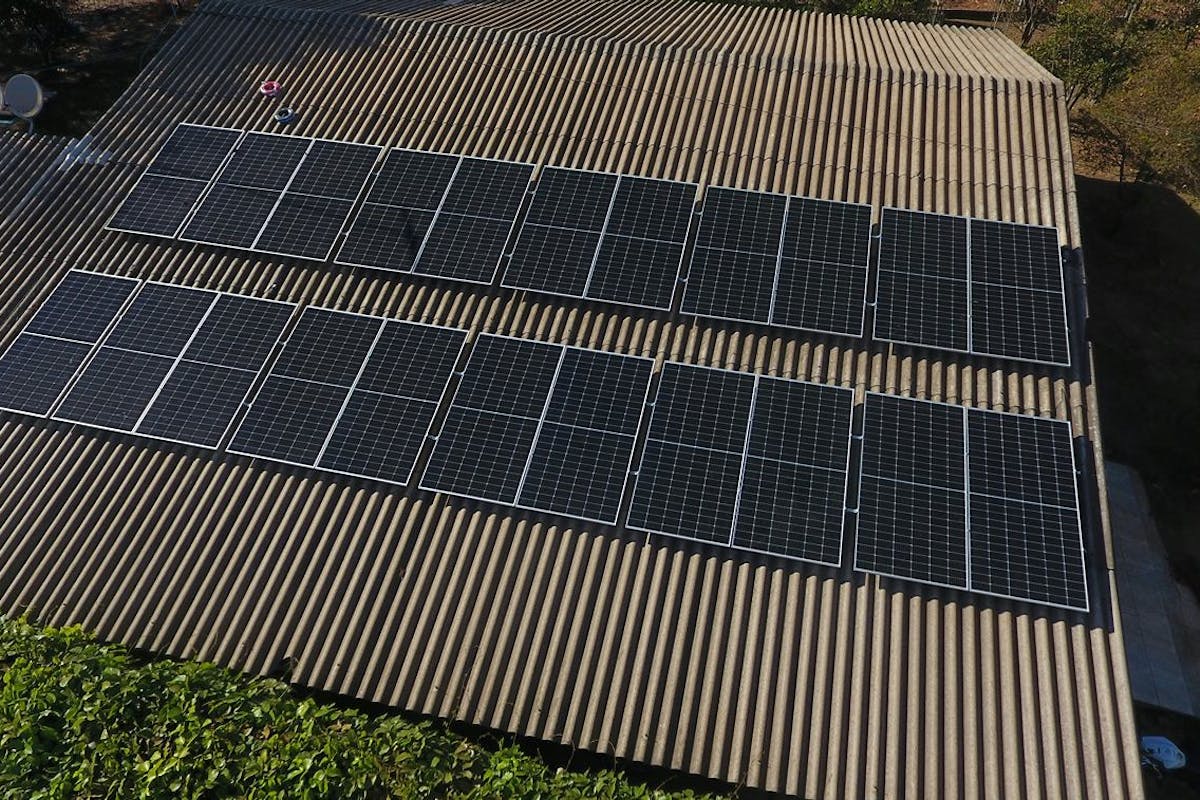Our Step-by-Step Guide to Going Solar
Last edited

Author
Andrew Giermak
Solar and Electrification Writer and Editor

Editor
Andrew Blok
Electrification and Solar Writer and Editor

Residential solar power is growing all over the country. The Solar Energy Industries Association reported the US surpassed 5 million solar power installations of all types and sizes in 2024, and 97% of those five million solar installations are on residential roofs.
It took about 50 years of solar energy growth to reach five million. SEIA estimates we’ll have over 10 million by 2030.
If you’re considering going solar for your home’s energy, you’re not alone in your interest or your questions. Here’s what you need to know about making the switch to solar.
See how much you can save by going solar with Palmetto
The 5 steps to residential solar panels
When you partner with a reputable solar company, you’ll have an expert guide you through the solar process. In general terms, here’s how it works.
Evaluate your home and property for solar panels
Every solar system should be specific to the property it’s going on. Exactly how a system works for you depends on a few variables. You should know it works before signing up for a system that will last for 25 years or longer.
Location, location, location
Where you live is important for your local weather and climate conditions, from your spot on the globe down to the sunlight conditions at your home.
For example, a single solar panel installed in San Diego, California, would generate more than in Green Bay, Wisconsin, thanks to the annual difference in available sunlight in each location.

Your state’s policies and your utility rates help in determining the right system design, too. For example, the net metering or net billing available to you helps determine what solar offset will deliver the most savings and whether adding a battery will help you save.
Your property
Your roof and property itself are factors to a new system. Here are a few checks you can do on your own.
- Roof orientation. In the northern hemisphere, south-facing roofs are ideal for solar panels because they receive the most direct sunlight throughout the year. Rooftops facing east, west, southwest, and southeast can also be good fits.
- Roof size and features. There must be enough usable roof space (free of obstructions like vents and chimneys) to accommodate solar panels. While ground-mounting solar panels is an alternative, this also requires a large amount of yard space.
- Shading. Panels are most productive in full sunlight conditions. Although small amounts of shade can be managed, significant shading from trees or neighboring buildings may prevent solar panels from being a viable investment.
Design your system and weigh contract options
Designing the system that fits your needs, as well as considering the pros and cons of buying or leasing panels, is part of moving toward signing off on going solar.
A system to meet your needs
A residential solar system must meet your energy needs and finances. For most homeowners, this means installing the number of solar panels to generate the amount of electricity your home uses each year.
Most utilities allow homeowners to oversize a solar system slightly beyond their expected annual electricity consumption. This excess electric production can offset the energy demand of future home upgrades such as home electrification or EV charging.
Adding battery storage to your home system, for backup power or savings reasons, may be a worthwhile addition.
Knowing the cost
The total cost of solar panels varies for every project, with expenses in a few primary categories.
- Equipment: There’s the cost of solar panels, inverters, wiring, mounting materials, system protection, other hardware, and, if wanted, battery storage.
- Labor: A new system is installed, in most cases, in one or two days. Labor costs are a significant part of total project expenses.
- Other: There can be additional project expenses beyond equipment and labor. Other costs can include permitting, inspection, interconnection, transportation, financing, and administration.
Cash, loans, leases, PPAs
Paying cash for your energy system typically has the lowest total investment costs and most valuable lifetime savings.
Homeowners can also look at loans, leases, and power purchase agreements (PPAs). With $0 down in many instances, these methods enable immediate savings from solar electricity production and consistent monthly payments in place of escalating energy bills.
- Loans: Financing solar panels allows you to own your system and the energy it produces. Residential solar loans are available with varying terms, rates, and considerations, including programs with special financing for income-qualified households.
- Leases or PPAs: Solar leases and PPAs are slightly different, though both fall under the umbrella of "third-party ownership." With third-party ownership, a company owns the solar panels on your roof while you make monthly payments for the solar electricity you consume. In both cases, lease and PPA terms are designed to cost less than grid-supplied electricity.
With Palmetto’s LightReach Energy Plan, you get the benefits of solar for low, predictable payments alongside proactive system monitoring and a production guarantee.
See how much you can save by going solar with Palmetto
Finalize your solar energy system decisions
Solar incentives and protection plans can help your investment pay off.
Solar incentives
The Residential Clean Energy Credit (also known as the federal solar tax credit) can earn you federal income tax credits worth up to 30% of total project costs. This program now ends at the end of 2025. A new system must be installed and in service by Dec. 31, 2025 to qualify.
There are also tax credits, rebates, tax exemptions, and other incentive programs from states, localities, and utility companies you may be eligible for.
Protect your investment
Coverage of your system is typically an important piece of the puzzle since a system’s expected to last for 25 years or longer. Palmetto Protect gives customers production guarantees, proactive monitoring, and extended warranty coverages.
System installation
After signing a contract, the solar installation process can be officially set in motion. The installation process (from contract to interconnection) generally takes 2-6 months, depending on the speed of local permitting, installer queues, and other project variables.
Site assessment and approval
A physical site visit comes shortly after a contract signature for tasks such as measurements, addressing unforeseen property variables, and finalizing your system design.
After the site assessment, your solar company will send your project's info to your local building authority and utility for approval. After approval, you can schedule the installation.
Installation day
On installation day, be on hand to meet the solar installers. Although the work will take place mostly outside, a member of the installation crew may need to access your attic to complete the project safely.
Most companies recommend remaining at home during your home solar installation to be present for any questions or concerns.
Enjoy solar power and solar savings
After installation, there is one last round of approvals necessary. Once your system is approved by your utility and interconnected to the grid, your system can be turned on. You can begin using your own electricity and seeing the savings.
Using the Palmetto App, homeowners can track every aspect of system performance. The app also makes it easy to contact customer support or schedule a maintenance request.

The benefits of going to home solar power
Millions of Americans have switched to clean, renewable solar power. Solar panels can save you money on long-term electricity costs. That's a win for your pocket, your home, and the planet.
If you want to learn more about switching to solar, talk to Palmetto today. You can get started with our free solar savings tool to learn about your custom system and see how much you could save.
See what solar can do for you:
Frequently asked questions
How long does it take to install solar?
The whole process often takes a few weeks up to a few months factoring in system design, financing, scheduling, installation, and permitting. Installation itself often takes 1-2 days.
Is switching to solar worth it?
Going solar is worth it for many people and a growing number of people all over the US. Home solar systems are in use in all 50 states. Clean energy from home solar panels could save you money, increase the value of your home, and increase your energy independence.
How much does it cost to switch to solar power?
Solar isn’t a one-size-fits-all solution, so costs vary by project. Factors affecting price include the system’s size, your roof’s complexity and structure, the local cost of labor and permitting, and much more.


